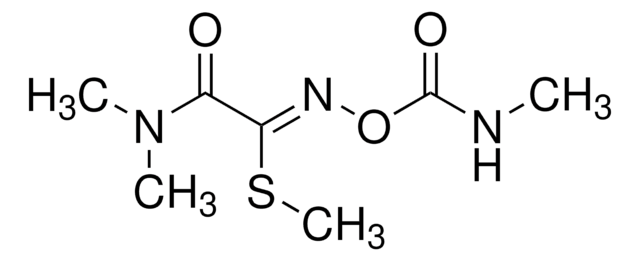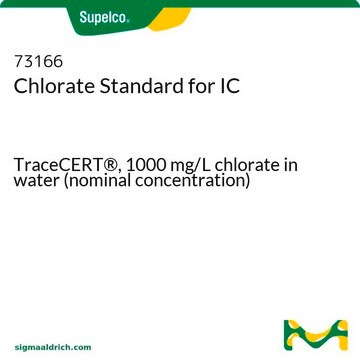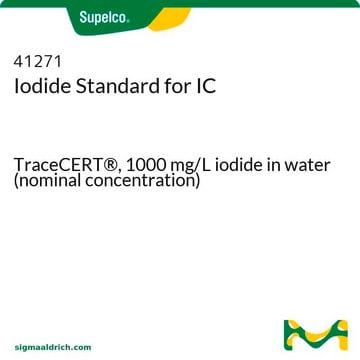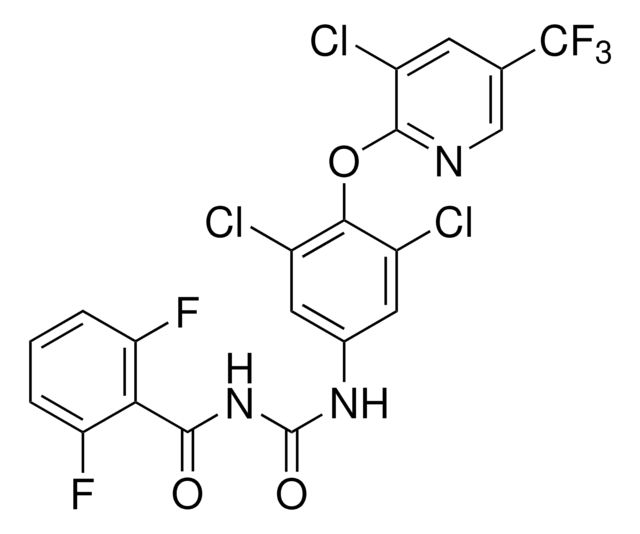442811
trans-Nonachlor
analytical standard
About This Item
Productos recomendados
grado
analytical standard
CofA
current certificate can be downloaded
envase
ampule of 25 mg
técnicas
HPLC: suitable
gas chromatography (GC): suitable
aplicaciones
environmental
Formato
neat
temp. de almacenamiento
2-30°C
cadena SMILES
ClC21C3C(C(C2(Cl)Cl)(C(=C1Cl)Cl)Cl)C(C(C3Cl)Cl)Cl
InChI
1S/C10H5Cl9/c11-3-1-2(4(12)5(3)13)9(17)7(15)6(14)8(1,16)10(9,18)19/h1-5H
Clave InChI
OCHOKXCPKDPNQU-UHFFFAOYSA-N
¿Está buscando productos similares? Visita Guía de comparación de productos
Aplicación
Palabra de señalización
Danger
Frases de peligro
Consejos de prudencia
Clasificaciones de peligro
Acute Tox. 3 Oral - Acute Tox. 4 Inhalation - Aquatic Acute 1 - Aquatic Chronic 1 - Carc. 2
Código de clase de almacenamiento
6.1C - Combustible acute toxic Cat.3 / toxic compounds or compounds which causing chronic effects
Clase de riesgo para el agua (WGK)
WGK 3
Punto de inflamabilidad (°F)
Not applicable
Punto de inflamabilidad (°C)
Not applicable
Equipo de protección personal
Eyeshields, Faceshields, Gloves, type ABEK (EN14387) respirator filter
Elija entre una de las versiones más recientes:
¿Ya tiene este producto?
Encuentre la documentación para los productos que ha comprado recientemente en la Biblioteca de documentos.
Nuestro equipo de científicos tiene experiencia en todas las áreas de investigación: Ciencias de la vida, Ciencia de los materiales, Síntesis química, Cromatografía, Analítica y muchas otras.
Póngase en contacto con el Servicio técnico










